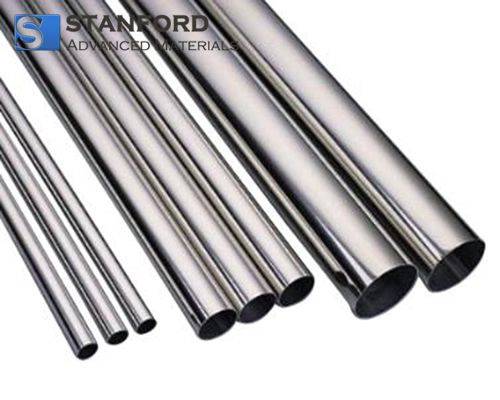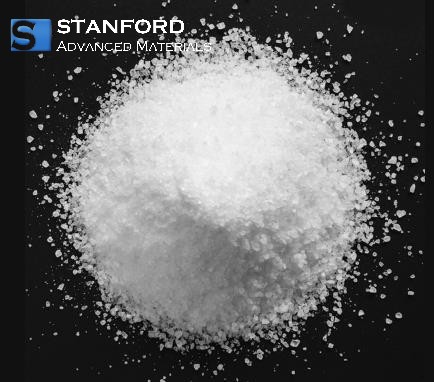Applications of Niobium Oxalate in Fine Functional Materials
Introduction to Modern Civilization’s Pillars
In the constellation of factors propelling the advancement of modern civilization, three pillars stand paramount: energy, information, and materials. Of these, materials form the foundational bedrock, the silent enablers of the leaps we observe in technology and innovation. They are the silent witnesses to our greatest achievements and the vessels of our most ambitious dreams. As we delve into the depths of material science, we uncover the potential to revolutionize not just individual sectors but the very fabric of our technological civilization.
Central to this revolution are functional materials, which, by their specific properties—be it light, electricity, magnetism, sound, heat, or biological characteristics—hold the key to unlocking new advancements in a myriad of domains. From the energy that powers our cities to the computing technologies that connect us and the medical advancements that sustain us, functional materials are indispensable. Their development and application stretch across the vast expanse of human endeavor, including but not limited to, energy production, computing technology, communications, electronics, laser technology, space exploration, and medicine.
In this intricate dance of progress, a material has emerged from the annals of science to take center stage in the narrative of the next technological revolution: niobium oxalate. This article delves into the role of niobium oxalate in the realm of fine functional materials, exploring its applications, implications, and the promise it holds for the future.
Role of Tantalum Niobium in Functional Materials
Tantalum niobium, elements once shrouded in the obscurity of the periodic table, have risen to prominence in the sphere of functional materials. Their journey from laboratory curiosities to cornerstones of advanced technological applications encapsulates the transformative power of material science. In the realm of fine functional materials—encompassing conductive ceramics, dielectric, ferroelectric ceramics, and ferrite—tantalum niobium plays a pivotal role, imbuing these materials with properties that are nothing short of revolutionary.
The versatility of tantalum niobium extends further into functional conversion materials, such as thermoelectric materials, piezoelectric materials, pyroelectric materials, and photoelectric materials. Each of these categories represents a frontier of innovation in harnessing and converting energy, with tantalum niobium at their core facilitating these processes with unparalleled efficiency.
Furthermore, in the domain of functional film materials—including optical thin films, magnetic thin films, conductive films, and dielectric films—tantalum niobium contributes to advancements that are integral to the development of cutting-edge technologies. From improving the efficiency of solar cells to enhancing the storage capacity of magnetic media, the influence of these elements is pervasive and profound.
Similarly, in functional catalytic materials, the role of tantalum niobium cannot be overstated. By catalyzing chemical reactions with higher precision and lower energy consumption, they enable processes that are cleaner, faster, and more sustainable. This attribute is particularly crucial in industries striving towards greener methodologies and practices.
Through its multifaceted applications in fine functional materials, tantalum niobium stands as a testament to the potential of elemental science to drive technological progress and innovation. It underscores the significance of continuing exploration and exploitation of the periodic table’s treasures in solving contemporary challenges and shaping the future of technology.
Niobium Oxalate: A Versatile Compound
Among the myriad of tantalum niobium applications, niobium oxalate emerges as a particularly versatile compound, capturing the attention of researchers and industry experts alike. As a soluble niobium compound, niobium oxalate offers unique advantages in the preparation of various functional materials, standing out for its remarkable adaptability and efficacy.
The significance of niobium oxalate in the world of functional materials stems from its exceptional properties as a precursor. It's this solubility and the ability to form uniform mixtures that make niobium oxalate an invaluable resource in crafting materials with superior qualities. Whether it's catalyzing chemical reactions, acting as a foundational element in the creation of dielectric materials, aiding in the development of advanced ferrites, or being transformed into niobium pentoxide for further applications, niobium oxalate's role is both diverse and impactful.
This compound's utility is enhanced by its compatibility with other materials, enabling the synthesis of compounds that inherit niobium's outstanding characteristics. Its application in creating materials that are stronger, more conductive, and more resilient than their predecessors is a testament to its potential to reshape the landscape of material science.
As we delve deeper into the specifics of niobium oxalate's applications, it becomes clear that its contributions to the advancement of fine functional materials are both significant and multifaceted. Its role in catalyzing innovation across a broad spectrum of technologies underscores the compound's importance in driving forward the next wave of scientific and technological breakthroughs.
Applications of Niobium Oxalate
Delving into the specific applications of niobium oxalate reveals the breadth and depth of its potential to revolutionize fine functional materials across various sectors.
Catalyst
In the realm of catalysis, niobium oxalate distinguishes itself as a critical precursor for the production of niobium oxide-based catalysts. These catalysts, leveraging the unique properties of niobium, play pivotal roles in various chemical processes. Niobium's function as an active, catalytic, and supporting phase in catalysts allows for the optimization of reaction pathways, enhancing efficiency and selectivity. The soluble nature of niobium oxalate facilitates its combination with other metal compounds, creating catalysts that are more reactive and stable under a wide range of conditions. This adaptability is crucial for industries focused on green chemistry and sustainable processes, where niobium-based catalysts can lead to more environmentally friendly reactions with higher yields.
Dielectric Materials
Niobium oxalate serves as an exemplary precursor for niobium oxide, a component integral to the production of high-performance dielectric materials. The conversion of niobium oxalate to niobium oxide at relatively low temperatures, coupled with its water solubility, ensures a more uniform distribution of niobium within the material matrix. This uniformity is vital for minimizing electric losses and maximizing magnetic conductivity, thereby enhancing the performance of electronic components. The advancements in dielectric materials facilitated by niobium oxalate contribute significantly to the miniaturization of electronic devices, making them smaller, lighter, and more efficient.
Ferrite
In the development of ferrites, niobium oxalate's contribution cannot be overstated. The addition of niobium ions, derived from the water-soluble niobium oxalate, into ferrite materials, leads to an improvement in performance, particularly by reducing energy loss at high frequencies. This enhancement is crucial for applications in electronics and communication technologies, where ferrites are used in transformers, inductors, and magnetic cores. The ability of niobium oxalate to improve the uniformity of the material and, consequently, the magnetic properties of ferrites, underscores its value in the production of components that are more efficient and reliable.
Through these applications, niobium oxalate stands out as a transformative agent in the field of fine functional materials. Its versatility and efficacy in improving the properties of catalysts, dielectric materials, and ferrites highlight the compound's central role in advancing current technologies and paving the way for future innovations. The exploration of niobium oxalate's potential is a journey that promises to unlock new possibilities in material science, contributing to the development of technologies that are more efficient, sustainable, and impactful.
Challenges and Future Research Directions
Despite the promising applications and transformative potential of niobium oxalate in the development of fine functional materials, several challenges hinder its widespread adoption and integration into industrial processes. One of the primary obstacles is the scalability of production methods. While niobium oxalate offers significant advantages in laboratory settings, scaling up its production to meet industrial demands remains a technical and economic challenge. The cost of synthesizing high-purity niobium oxalate and integrating it into manufacturing processes can be prohibitive, necessitating further research and innovation to develop more cost-effective and efficient production techniques.
Another challenge lies in the optimization of niobium oxalate's incorporation into functional materials. Achieving the desired distribution and concentration of niobium within these materials requires precise control over the synthesis and processing conditions. This level of control is critical for realizing the full potential of niobium oxalate in enhancing the properties of catalysts, dielectric materials, and ferrites. Researchers must continue to explore new methods for manipulating the structure and composition of niobium oxalate-based materials to unlock new functionalities and applications.
The future research directions for niobium oxalate in functional materials are as vast as they are exciting. Interdisciplinary collaboration between chemists, material scientists, engineers, and industry professionals will be crucial in overcoming the existing challenges and unlocking the compound's full potential. Areas of particular interest include the development of green synthesis methods for niobium oxalate, the exploration of its applications in renewable energy technologies, and the investigation of its potential in emerging fields such as nanotechnology and biomedicine.
Conclusion
Niobium oxalate stands at the forefront of material science innovation, offering a pathway to the development of fine functional materials with unprecedented properties and capabilities. Its applications in catalysts, dielectric materials, and ferrites demonstrate the compound's ability to drive technological advancements and address some of the most pressing challenges facing modern society. However, realizing the full potential of niobium oxalate will require concerted efforts to overcome the challenges of scalability and integration into existing manufacturing processes.
As research into niobium oxalate continues to unfold its potential for revolutionizing material science and advancing sustainable technologies, the collaboration with leading suppliers like Stanford Advanced Materials (SAM) becomes increasingly important. Their provision of high-quality niobium oxalate and other advanced materials is crucial for bridging the gap between laboratory research and industrial application, ensuring that the transformative benefits of niobium oxalate reach a broader spectrum of technological innovations.





